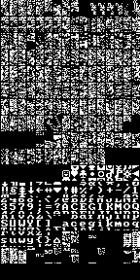retro-pc_user
Veteran Member
I have no idea if this is possible or not, however, is there a way and is somebody willing to implement the MR-BIOS for a Packard Bell PB450 motherboard that has an OPTi 82C895 chipset, Cirrus Logic CL-GD5428 video?
Here's the dumped standard BIOS image when I archived the chip a couple of months ago: https://drive.google.com/open?id=1P0uAcU2msT9wtKus_yc_vI5QUEmjyb94 (128KB)
And for the 82C895 MR-BIOS: http://www.mediafire.com/file/49pbetqu7yyk4rl/OPTi_82C895_MR-BIOS_v202.zip <-- link from: https://www.vogons.org/viewtopic.php?f=61&t=59146#p658582 & http://www.vcfed.org/forum/showthre...-BIOS-ROM-file-repository&p=506385#post506385 (64KB)
The video BIOS is implemented in the chip itself and I cannot find any resources or know which lines to copy over from the 82C895 MR-BIOS image to the Packard Bell BIOS image.
Here's the dumped standard BIOS image when I archived the chip a couple of months ago: https://drive.google.com/open?id=1P0uAcU2msT9wtKus_yc_vI5QUEmjyb94 (128KB)
And for the 82C895 MR-BIOS: http://www.mediafire.com/file/49pbetqu7yyk4rl/OPTi_82C895_MR-BIOS_v202.zip <-- link from: https://www.vogons.org/viewtopic.php?f=61&t=59146#p658582 & http://www.vcfed.org/forum/showthre...-BIOS-ROM-file-repository&p=506385#post506385 (64KB)
The video BIOS is implemented in the chip itself and I cannot find any resources or know which lines to copy over from the 82C895 MR-BIOS image to the Packard Bell BIOS image.

